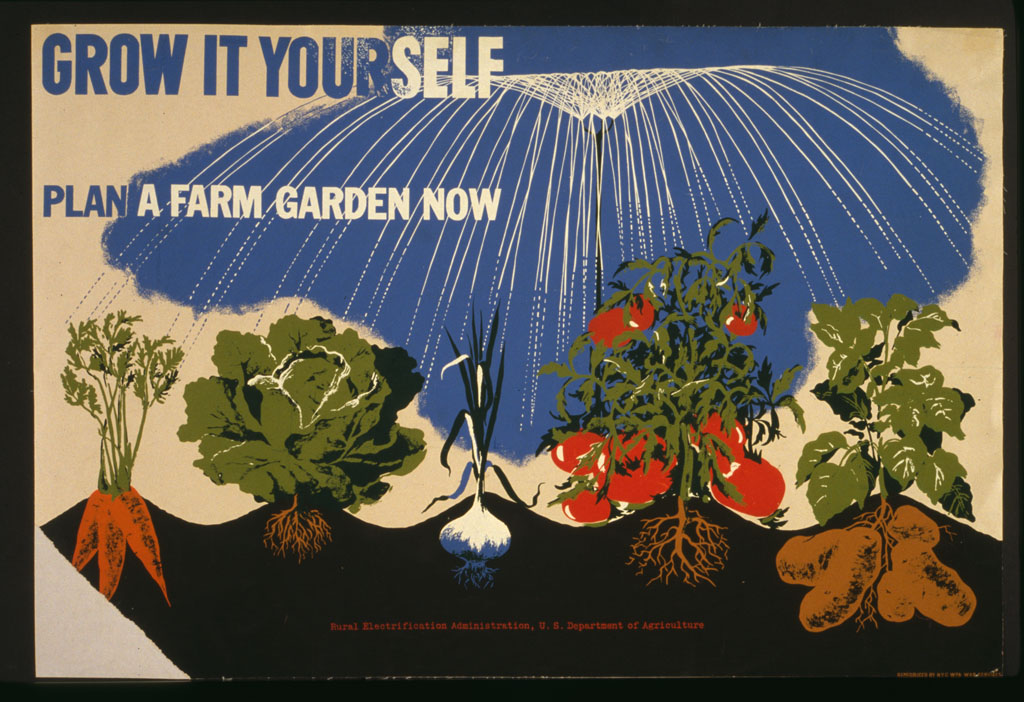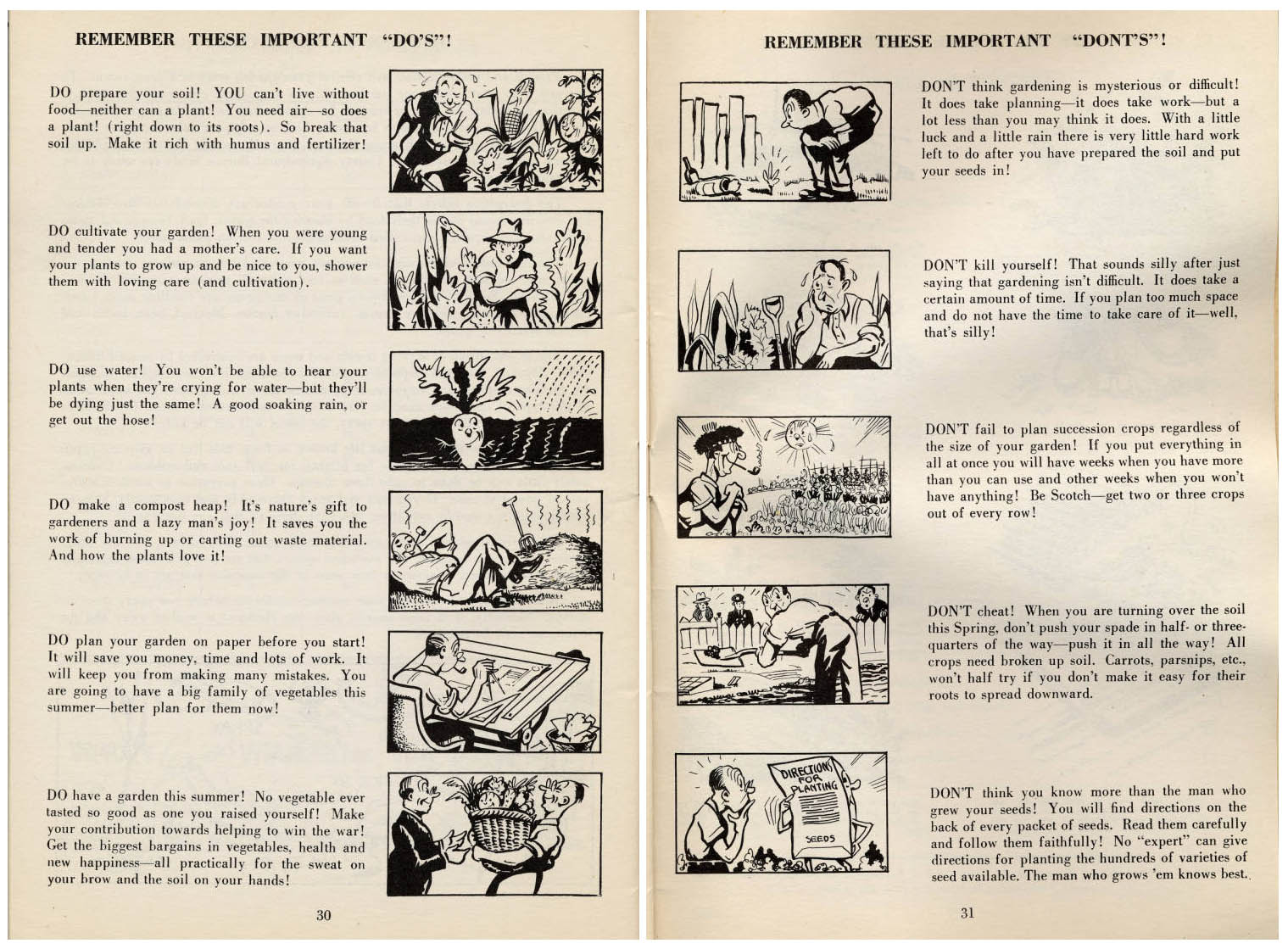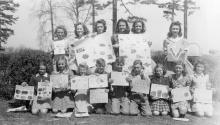During the war, canned goods were rationed, and labor shortages and gasoline rationing made it hard to harvest fruits and vegetables and get them to market. During the Depression, the U.S. Department of Agriculture (USDA) and state agricultural extension agencies had promoted gardening and canning as a way for people out of work to feed themselves. Now, the government stepped up those efforts, asking citizens to grow "Victory Gardens."

The USDA had promoted “farm gardens” during the Depression. When the U.S. entered the war, the government pitched gardening to urbanites, as well.
Extension agents developed programs to provide seed, fertilizer, and simple gardening tools for victory gardeners. Instructional booklets showed people how to grow and preserve their own food step by step. In 1942, the program's first year, about 15 million families planted victory gardens -- in backyards, in empty lots, and even on city rooftops. In 1943, 20 million victory gardens produced more than 40 percent of the fresh vegetables grown that year in the U.S. And to preserve the harvest, in 1943, Americans bought 315,000 pressure cookers for canning -- up from only 66,000 the previous year.
Teaching Americans to garden
Plenty of Americans still lived on farms in 1942, or had grown up on farms. But residents of cities and suburbs wanted to do their part for victory, too -- or at least have enough vegetables for their families. Government agencies and private companies quickly developed ways to teach all these first-time gardeners.
This U.S. Department of Agriculture film was produced to show Americans what it took to grow a successful victory garden -- and to convince them that it was worth the effort.

This book, designed to be sold where seeds and tools were sold, took a light approach to teaching first-time gardeners.
From Life magazine
Popular magazines ran articles about victory gardens and published instructions for first-time gardeners. By the end of the war, the victory garden was so much a part of popular culture that it even appeared in advertisements.
- Gardens for U.S. at War: Six million amateurs work the soil (March 30, 1942, pp. 81–84) - Introduces the idea of "victory gardens" and gives tips for first-time gardeners.
- Victory gardens: They are springing up in strange nooks and crannies all over U.S." (May 3, 1943, p. 29) - Article notes 18 million gardens planted in 1943 and includes photographs of some of the more surprising places converted to garden space.
- [Sanka advertisement] (June 25, 1945, p. 40) - In this ad, a woman's "wartime conscience" introduces her to decaffeinated coffee, suggesting that by cutting back on caffeine and getting more sleep, she could put more attention into her victory garden.
